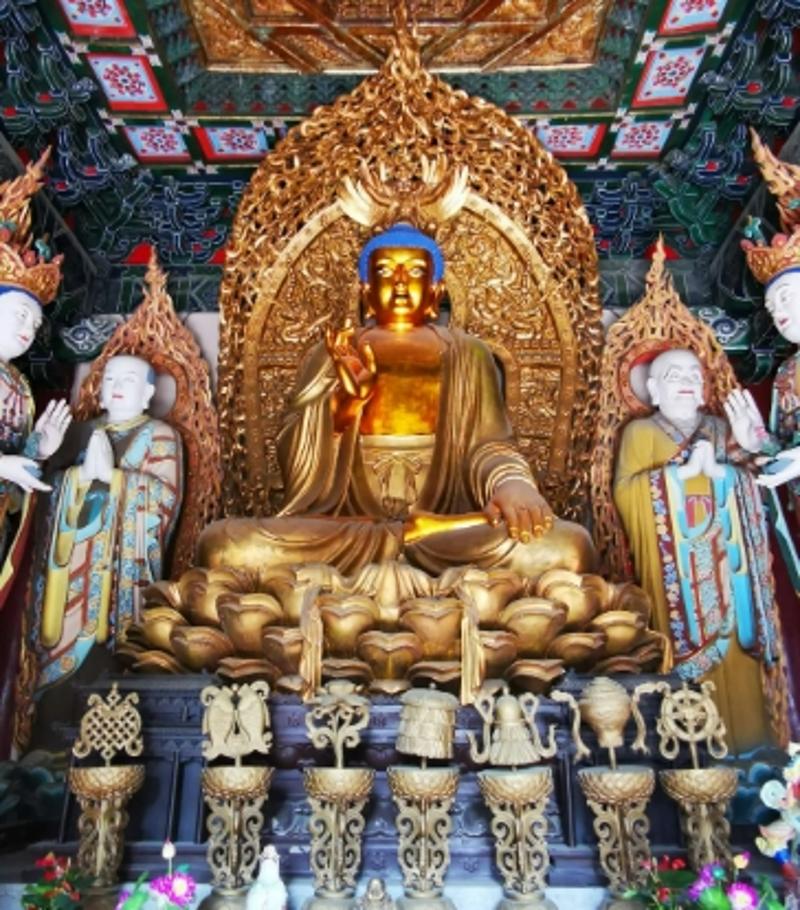Biyun Temple in Fragrant Hills Park, Beijing
Biyun Temple is located within Fragrant Hills Park at 40 Maimai Street, Haidian District, Beijing. It was first established in the second year of the Yuan Zhi Shun era (1331). The temple, solemn and dignified, has long been a place of devout prayers for believers. Today, Biyun Temple, as an ancient temple within Fragrant Hills Park, is not only a treasury of historical relics but also an important place full of cultural significance and historical meaning.

1. Historical Evolution
- Establishment: In the second year of the Yuan Zhi Shun era (1331), the descendant of Yelu Chujie, Yelu Aji, converted his mansion into a small Buddhist hall, named Biyun An.
- Ming and Qing Dynasties: During the reign of Emperor Zhengde of the Ming Dynasty, eunuchs from the Imperial Stable Office expanded Biyun An into Biyun Temple. In the first year of the Shunzhi reign of the Qing Dynasty (1644), the temple was expanded several times and used as the tomb of Wei Zhongxian's ceremonial robe.
- Modern History: In the fourteenth year of the Republic of China (1925), Mr. Sun Yat-sen lay in state in the rear hall of Biyun Temple. As a result, the rear hall was renamed the Sun Yat-sen Memorial Hall, and the Diamond Throne Pagoda became the tomb of Mr. Sun Yat-sen's ceremonial robe.
2. Architectural Layout
- North-South Symmetry: Biyun Temple features a distinct north-south symmetrical axis layout, rising layer by layer along the mountain terrain, covering an area of about 40,000 square meters.
- Main Buildings: The main buildings along the central axis include the mountain gate, mountain gate hall, Maitreya hall, Mahavira hall, Bodhisattva hall, Sun Yat-sen Memorial Hall, Diamond Throne Pagoda, etc.
- Arhat Hall and Water Spring Court: Biyun Temple also includes the Arhat Hall and Water Spring Court, which consist of meditation halls, Arhat halls, scripture halls, and Emperor Qianlong's palace.
3. Cultural Relics Value
- Historical Buildings: Biyun Temple houses cultural relics from the Ming and Qing dynasties, providing tangible materials for the study of architecture in those periods.
- Cultural Heritage: As the fifth batch of national key cultural relics protection units, Biyun Temple carries rich historical and cultural connotations, making it one of the precious heritage sites of ancient Chinese architecture.
4. Relic Protection and Restoration
- Relic Protection: On October 28, 1957, Biyun Temple was announced as the first batch of municipal-level cultural relics protection units by the Beijing Municipal People's Government. On June 25, 2001, it was announced as the fifth batch of national key cultural relics protection units by the State Council of the People's Republic of China.
- Protection and Restoration: On November 20, 2023, Biyun Temple underwent protection and restoration. It is expected to reopen in early October 2024 to protect and inherit its precious historical culture.
5. Travel Information
- Location: Located within Fragrant Hills Park, easily accessible by transportation, allowing visitors to arrive conveniently.
- Transportation: Visitors can take buses or taxis to get there, or choose to walk into Fragrant Hills Park and follow the signs to Biyun Temple.
Biyun Temple, as an important attraction in Fragrant Hills Park, Beijing, not only showcases the exquisite craftsmanship and grandeur of ancient architecture but also carries rich historical and cultural connotations. Visitors can not only appreciate its unique architectural style but also feel the weight and solemnity of history when visiting.
Q&A:
Q1: What historical events are associated with Biyun Temple in Fragrant Hills Park?
A1: Biyun Temple, originally Biyun An, was established in the Yuan Dynasty. During the Ming and Qing dynasties, it underwent expansions and was renamed Biyun Temple. In modern history, it served as the site for Mr. Sun Yat-sen's memorial service, reflecting its historical significance.
Q2: What measures have been taken to protect and preserve the cultural relics at Biyun Temple?
A2: Biyun Temple has been designated as a municipal-level and national key cultural relics protection unit. It has undergone protection and restoration projects to ensure the preservation and inheritance of its precious historical and cultural heritage.